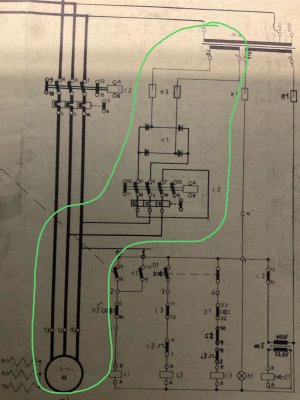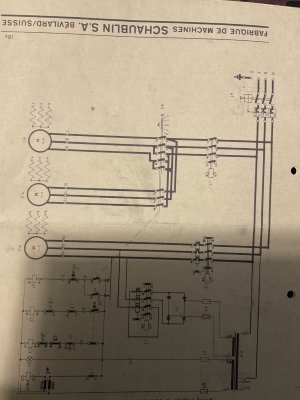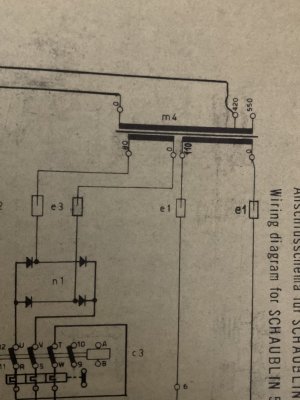Im finishing up converting my milling machine to single phase and was wondering if anyone can explain this part of the original wiring diagram. Thanks.
It is a schaublin mill.
To me it seems like they are feeding 2 legs of the rapid motor with 80v DC? If this is true why would they do that? Or am I completely wrong?
It is a schaublin mill.
To me it seems like they are feeding 2 legs of the rapid motor with 80v DC? If this is true why would they do that? Or am I completely wrong?



